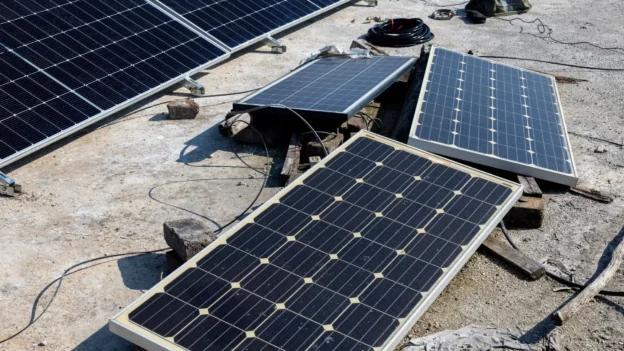At the heart of the energy transition, South Korean researchers have achieved a double whammy: producing pure hydrogen from ammonia, and recycling decommissioned solar panels. The process, developed by Professor Jong-Beom Baek’s team at UNIST, harnesses mechanical energy to decompose ammonia with recycled silicon, generating hydrogen and silicon nitride.
From used solar panels to clean H₂ production.
The method uses silicon extracted from solar panels at the end of their useful life and combines it with ammonia gas gas in a ball mill, where friction activates the reaction. Unlike traditional processes that require temperatures above 400 °C and multiple separation stages, this approach operates at 50 °C without further purification, generating 100% pure hydrogen.
Applications of Si₃N₄ in rechargeable batteries.
The silicon nitride resulting from the reaction is a stable by-product and also a material in high demand in the battery industry. Tests with lithium-ion cells cells showed capacities in excess of 390 mAh/g and 80% retention after 1,000 cycles of use, opening up an opportunity for their integration into long-term energy storage systems.
According to the economic analysis presented by the researchers, if the revenue from the sale of Si₃N₄ is considered, the net cost of hydrogen production can be negative, hovering around -7 USD per kilogram. This makes the process a clean alternative and also financially viable, aligning with global decarbonization goals.
Prospects for the circular hydrogen economy
The use of ammonia as an energy vector is already explored by countries such as Japan and South Korea. However, releasing H₂ efficiently at low temperature has been a technical hurdle. This new approach simplifies the process and proposes a scalable solution to manage solar waste, produce green hydrogen and generate battery materials.
The research has been published in the Journal of the American Chemical Societyhighlighting a possible avenue for transforming waste into essential energy resources of the future.
Source: Ulsan National Institute of Science and Technology.
Photo: Shutterstock

